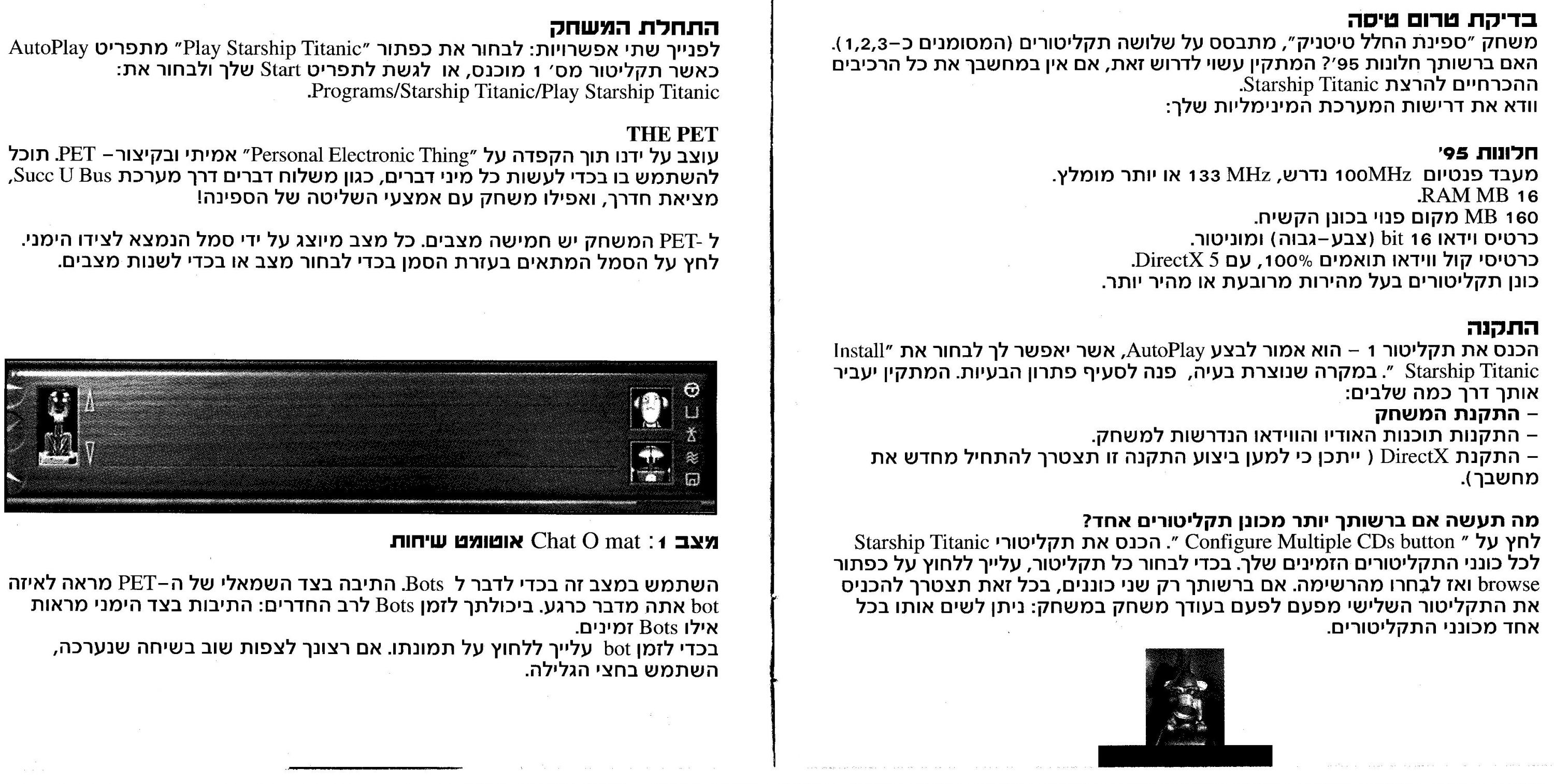

Starship Titanic also seems to hold a grudge against interacting directly with the environment.
STARSHIP TITANIC GUIDE ENTRY TV
(Why you need to reach your TV isn’t entirely clear at first, but just roll with it.) But isn’t just getting to this point kind of a puzzle? It really shouldn’t be, because all you’re doing is struggling with the game’s vague sense of direction and halfway nonsensical structure.

Once you’ve found the proper room, at this point you have the game’s first real puzzle, where you need to rearrange the pull-out furniture in a way that you can actually reach your TV. Whenever you enter any of the rooms, it tells you, “This is your Stateroom.” If you’ve entered the wrong room and try to interact with it, it will then immediately contradict itself and say “This is not your Stateroom, please do not enjoy.” It’s also not entirely clear, but the rooms are also stacked vertically, and there are elevators next to each door to take you between them. Instead, you need to walk up next to it and read the message at the bottom of the screen which identifies the room you’re in. Once you actually reach the correct floor, you need to find your room – not an easy task, because the rooms are not actually numbered. First you need to find the elevators, which are practically camouflaged the middle of the ships’ main hallway.

Right at the beginning, you’re given a ticket and instructed to find your room, a task which is far more monumentally confusing than it should be.
STARSHIP TITANIC GUIDE ENTRY UPGRADE
Once you get your bearings, your goal, at first, is to upgrade your ticket a few times to higher classes, and then eventually find all of the missing pieces of Titania, the computer that controls the ship. And while you can skip through the short walking transitions by holding down the Shift button, you can’t skip the long elevator or Pellerator rides, which again, makes navigation remarkably tedious. While this was probably done to make the game world larger, and therefore more realistic, it also makes most of the ship feel strangely disconnected. Beyond the initial embarkation lobby and a hallway that connects a few other areas, the staterooms are all accessed by elevators, and the rest of the ship is only accessible through a transportation vehicle called a Pellerator. It’s actually pretty fun to watch, except for how often you’ll see them, since most of the puzzles revolve around ferrying items from one corner of the ship to the other. But rather than consisting of static screens, when you move from node to node, there’s a very quick transitional video that’s sped up and extremely blurry, as if you were stumbling drunkenly through the ship’s corridors. It’s a bit like Myst, with the computer generated graphics and all. The whole game is viewed from the first person perspective, with a single cursor to indicate movement and interaction. In keeping with its namesake, it has an astoundingly beautiful futuristic art deco design. The Starship Titanic is a gorgeous vessel. You are invited onboard as its first (and only) guest to repair the ship, and try to figure out exactly what went wrong in the first place. Although not officially part of the Hitchhiker’s universe, the game picks up with that detail, as the Starship Titanic has somehow ended up right in the middle of your living room. promptly disappeared into nothingness) on its first journey. The idea of Starship Titanic came from a throwaway line in Life, The Universe, and Everything, the third Hitchhiker’s book, which described a luxurious intergalactic cruiser that suffered from Spontaneous Massive Existence Failure (i.e.

And yet, somewhere along the line, something went terribly wrong. The game was conceived by Douglas Adams, not only one of the most well regarded comedy/sci-fi writers of our time, but also the man associated with The Hitchhiker’s Guide of the Galaxy, well known as one of the genre’s best text adventures. On paper, Starship Titanic sounds completely fantastic.


 0 kommentar(er)
0 kommentar(er)
